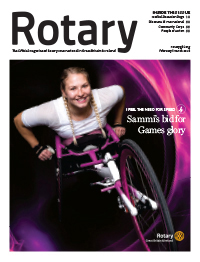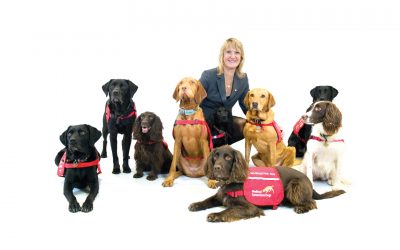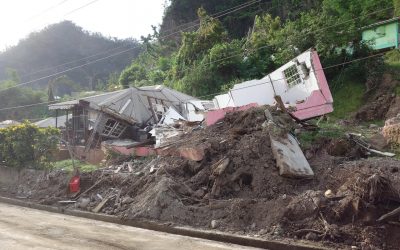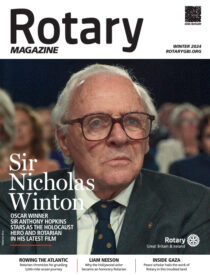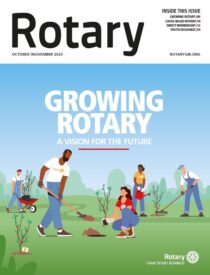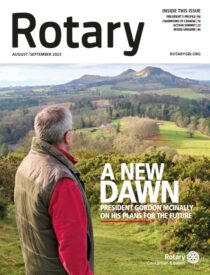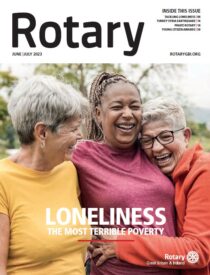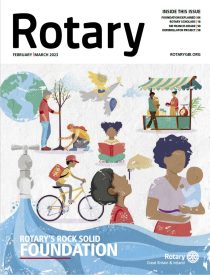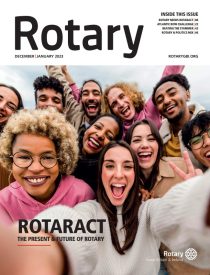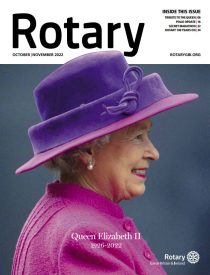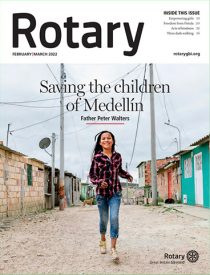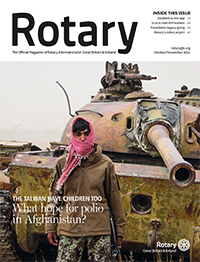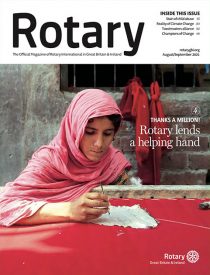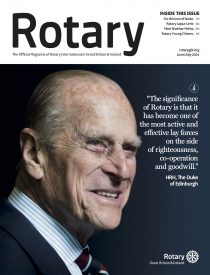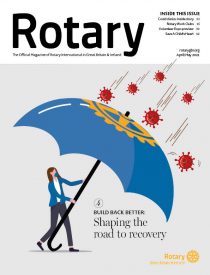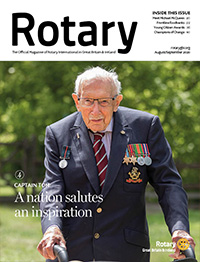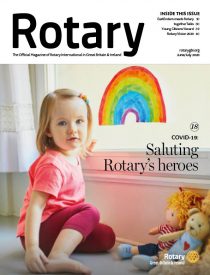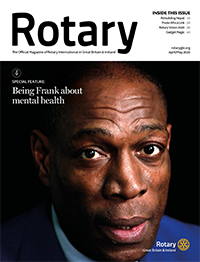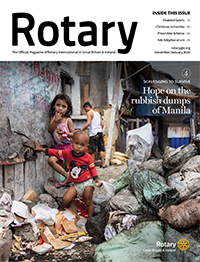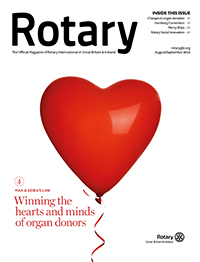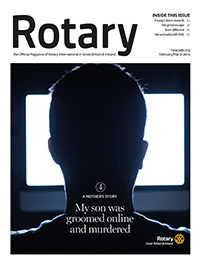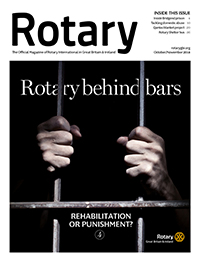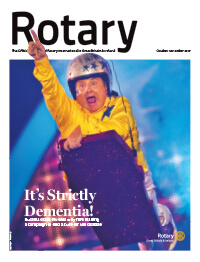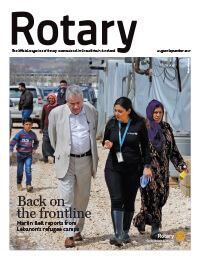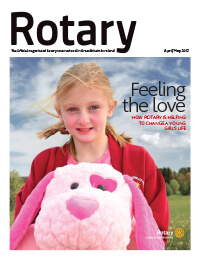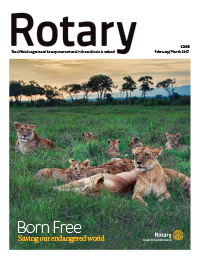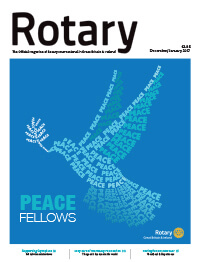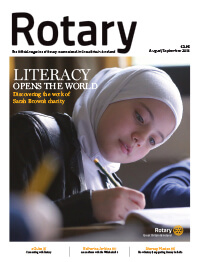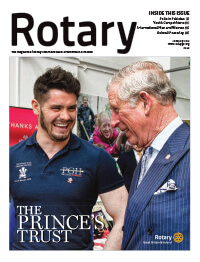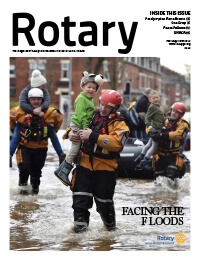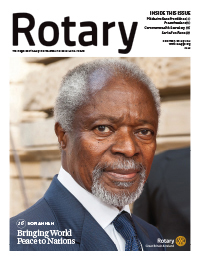Rotary Community Corps allows volunteers to tap into our organisation’s network.
Mobilising more than 200,000 volunteers across 92 countries, the Rotary Community Corps expands Rotary’s reach by bringing the knowledge and talents of local people to projects in their communities.
Sponsored by a local club, corps members are not Rotarians but can tap into the Rotary network.
Conceived as the Rotary Village Corps during the term of RI President M.A.T. Caparas in the late 1980s, the Rotary Community Corps (RCC) was initially viewed as a programme for the developing world.
Even today, most of the 9,400 RCCs are concentrated in India, followed by the Philippines and Africa. About 60 are sponsored by clubs in the United States; Canada hosts four.
Every community corps differs in size and scope. Here we focus on two projects, one in Swindon, and another in South America.
Swindon, England
In the United Kingdom, induction or hearing loops help broadcast sounds for people with hearing loss by generating a magnetic field that is picked up by hearing aids and cochlear implants to lessen background noise and bring conversation to the forefront.
Under the Equality Act 2010, these loops should be installed in most public buildings, including libraries and council offices. But without anyone trained to activate them, many of the audio-frequency systems – which are based on World War II technology developed by the Royal Navy to detect enemy submarines – remain idle.
Heeding the call of Rotary magazine editor, Dave King, who worked with the charity Hearing Link, a non-profit focused on hearing loss, his club the E-Club West of England started a Rotary Community Corps in Swindon to address the problem.
Tim Mason, who had founded Britain’s first Rotary Community Corps in the nearby Wiltshire town of Malmesbury, formed a steering committee which included councillors, audiologists, officials from the Great Western Hospital and Zurich Insurance, as well as representatives from businesses and charities in Swindon.
They recruited 15 people, including two Rotarians. By December 2016, two-person teams from the Let’s Hear in Swindon Rotary Community Corps had checked more than 500 loops around the town.
Their awareness campaign has encouraged more hearing aid wearers to use loops and businesses to install them.
“With Let’s Hear, there was a groundswell of people who wanted to improve the situation for the hearing impaired, and community groups across the country have begun to replicate the project,” explained Tony Horn, a past governor of District 1100, and a member of the Rotary Club of Swindon Phoenix.
While the UK is a latecomer to adopting the RCC model, Tony and Tim see promise for hands-on, technical projects.
Members of the RCC in Malmesbury focus on flood control, monitoring the water level of the River Avon, checking that sluice gates remain free of debris.
“There was a need for a service group that could help the town,” explained Tim, who is now heading up a new group, Rotary Social Innovation, which is based in south-east Hampshire.
“Rotary Community Corps is a good way for us to recruit volunteers and get them interested in Rotary. “It’s an ideal platform for people to start learning what Rotary is all about.”
Leticia, Colombia
In 2010, rains thrashed Colombia, flooding nearly 4,000 square miles of farmland and coastal villages – including Leticia, an impoverished community reliant on the shrimp harvest.
“It was completely flooded. You had to go house to house in boats,” said Carolina Barrios, a member of the Rotary Club of Cartagena de Indias, which delivered essentials to the community of about 400 people in the immediate aftermath of the storm.
“But when the floods passed we could not just leave this community by itself.”
The Cartagena Rotarians wanted to help revitalise Leticia. But the journey there was difficult – a 45-minute drive from Cartagena, followed by another 45 minutes aboard a motorboat.
“This community doesn’t receive a lot of assistance because it’s so far away,” added Carolina. To bolster the relationship, the Rotarians recruited residents for a Rotary Community Corps.
“We got a leader from each block,” Carolina said. “All the elected leaders in Leticia are women. At the time, our club was also all women. It was easy for us to relate to them.”
Initially, Carolina pointed out, the members of the RCC of Leticia were not always on the same page. “But they have developed the ability to solve problems in an amicable way, because they know they are important to the community.”
When the floods passed, we could not just leave this community by itself.”
One thing the village struggles with is adequate sanitation. “We asked them for their solutions,” said Carolina Barrios.
Asking people from the community to do their own assessment and come forward with solutions to problems is a core principle of RCCs.
After putting together a needs assessment, the Leticia RCC members worked with Districts 4271 (Colombia) and 5280 (California) and the Rotary Clubs of Los Angeles and Woodland Hills, California, on a $38,000 (£29,000) global grant to install a basic sanitation system that included 25 septic tanks and 25 bathrooms, each including a toilet, shower, and sink.
Members of the RCC monitor the system to ensure that it is working properly. Using other funding, the corps also beautified a church that serves as a community hub, equipping a small room with computers, improving a playground, and planting trees.
In 2015, the high school that serves Leticia and the nearby village of El Recreo faced closure. Members of the Rotary club encouraged the women in the RCC to go to the municipal offices and advocate for their rights.
The appeal spared the school and brought a new Rotarian into the Cartagena de Indias club – the local secretary of education, Clara Inés Sagre Hernández – and resulted in a new RCC in El Recreo.
“New friendships have developed,” Carolina explained. We have music, we have dances, we eat together. The RCC members consider us part of the family. It’s also been important for our growth as a club.”








